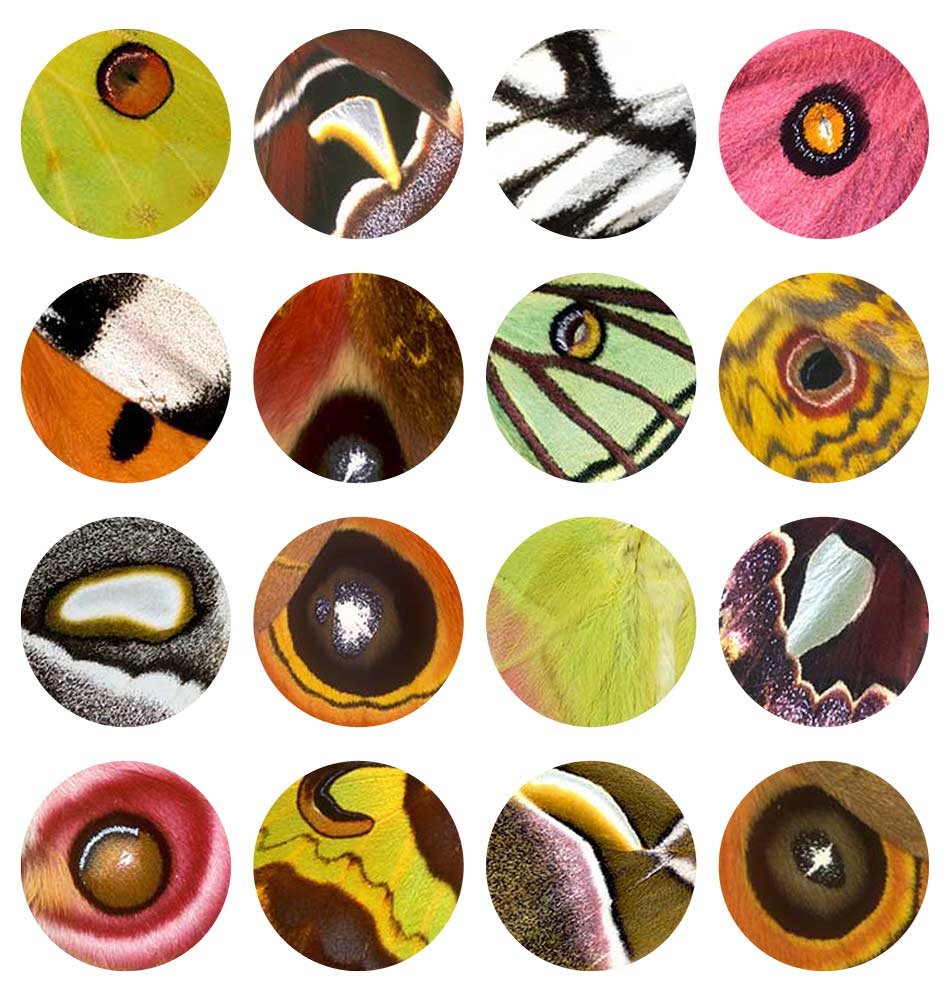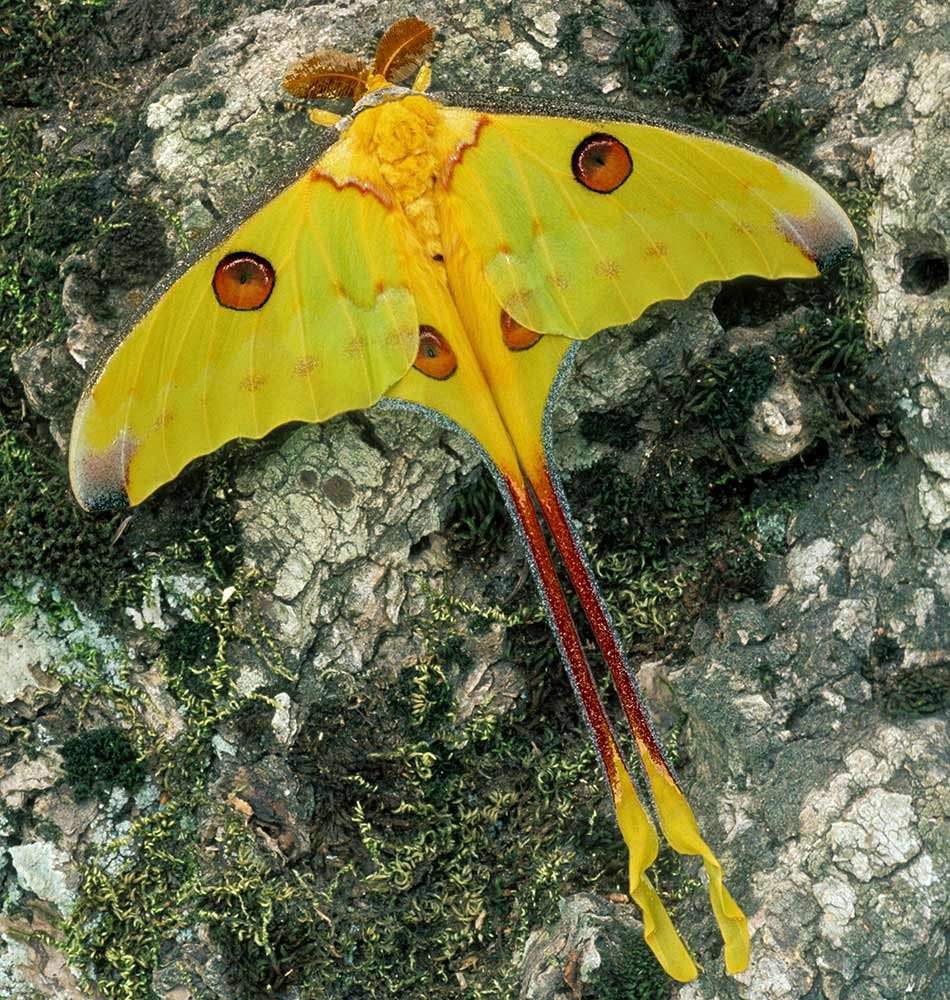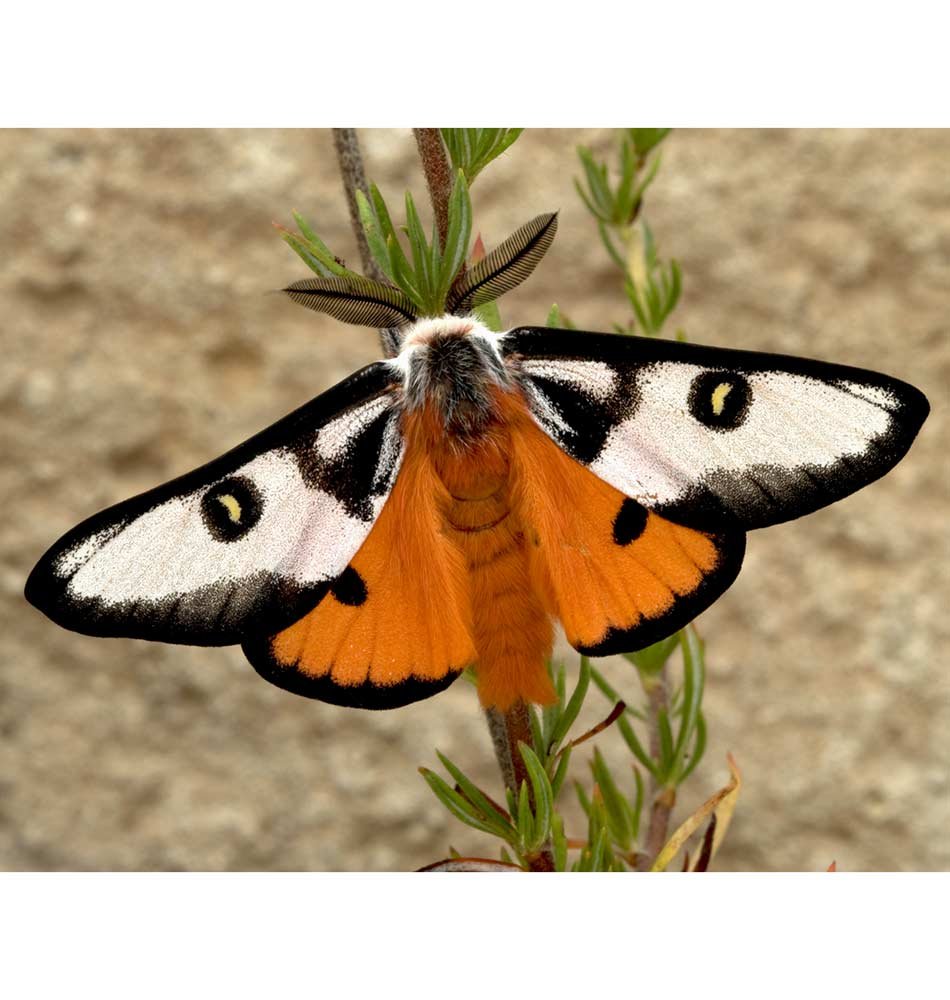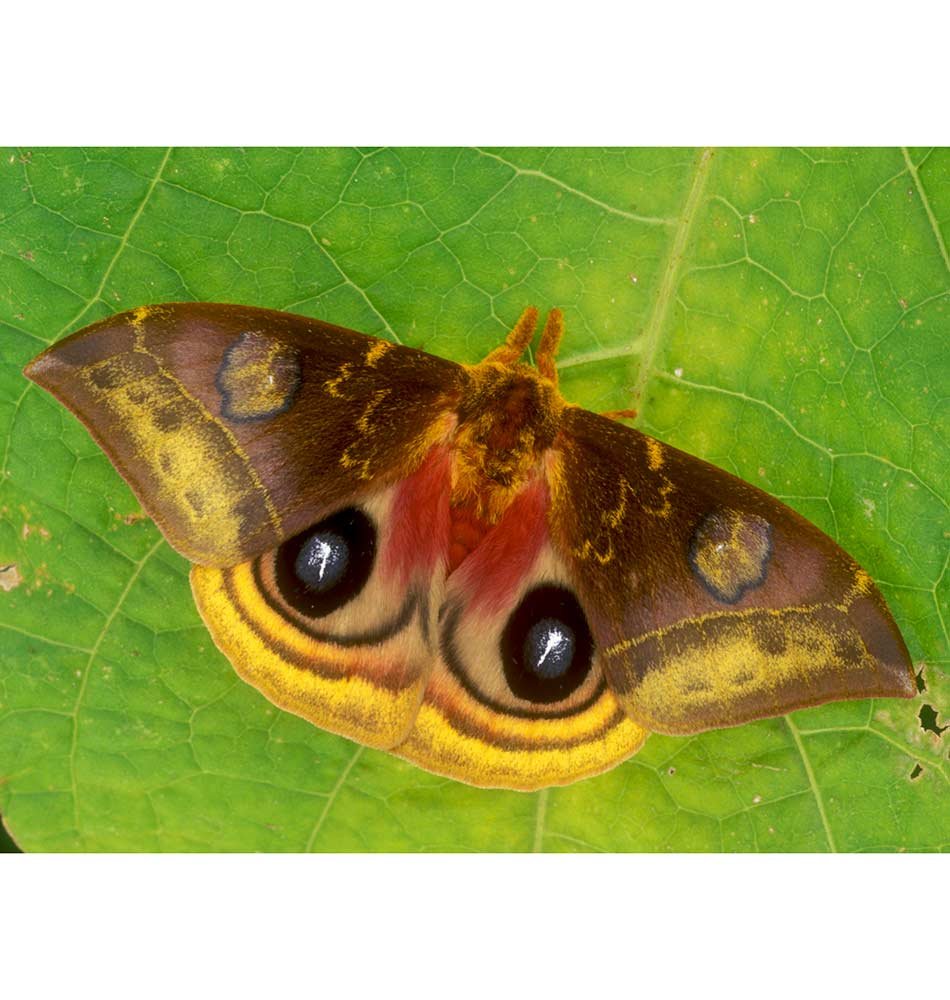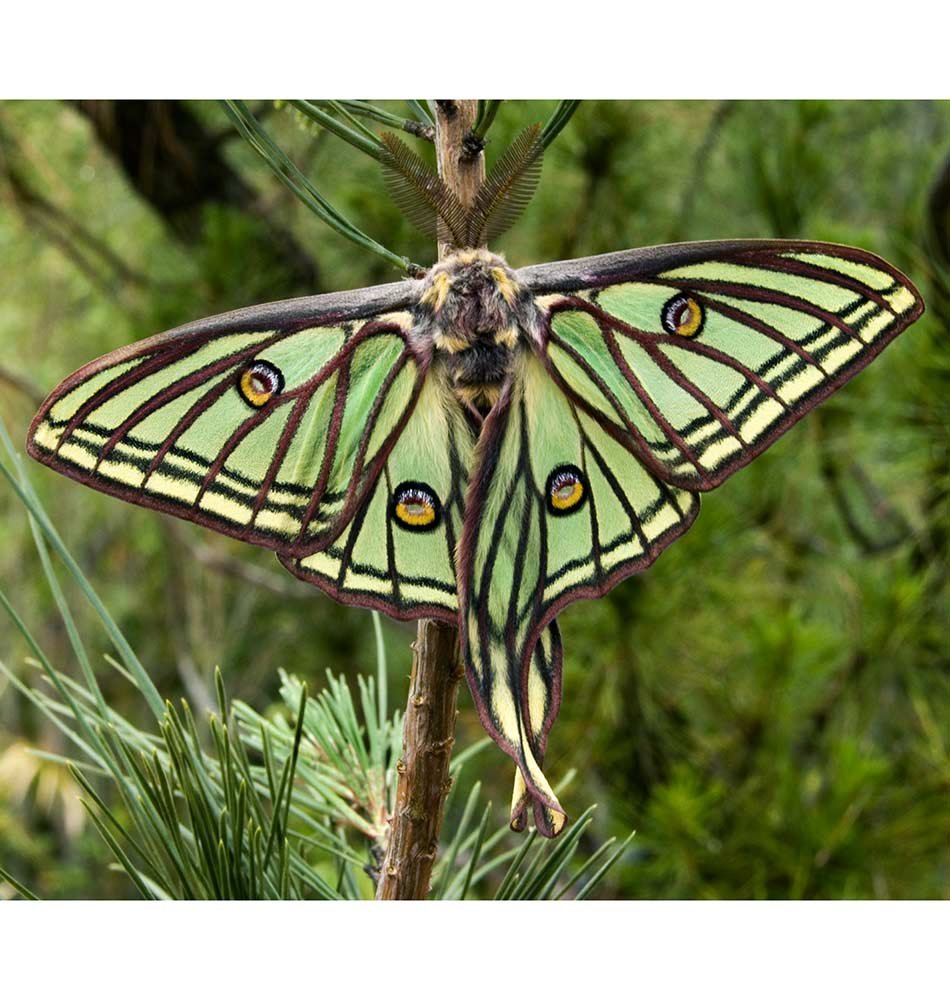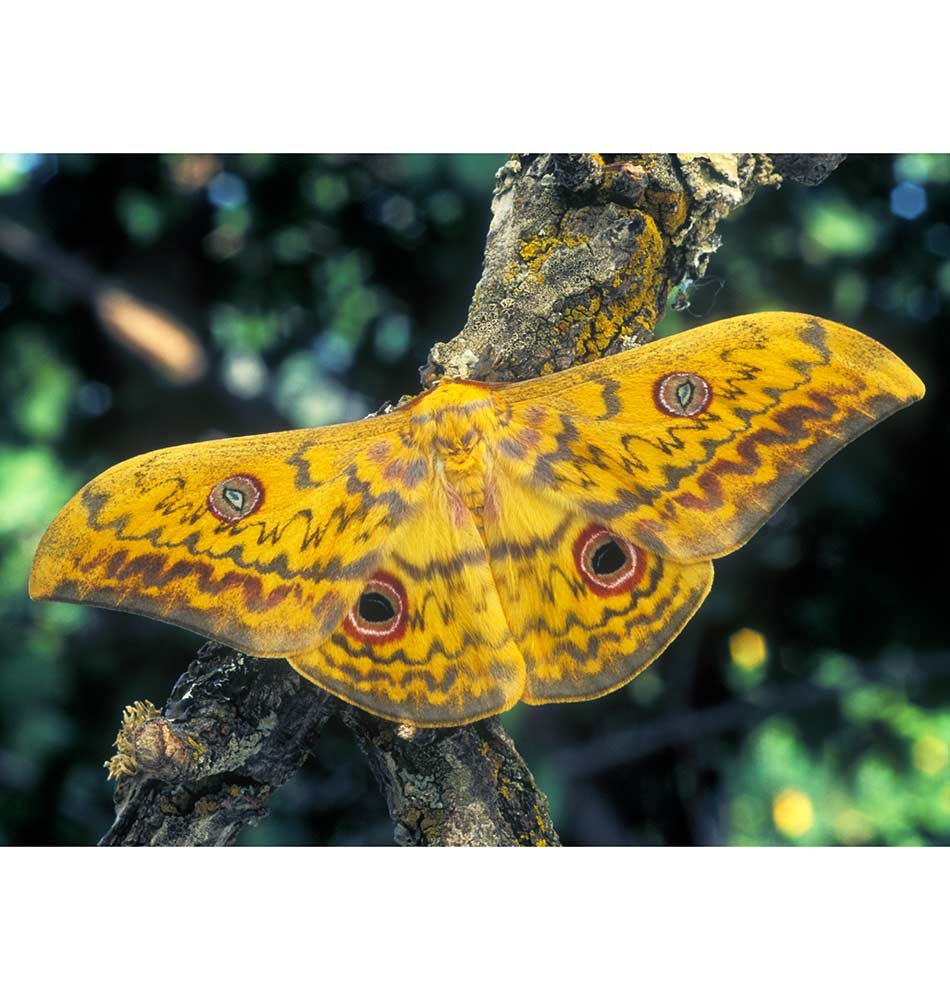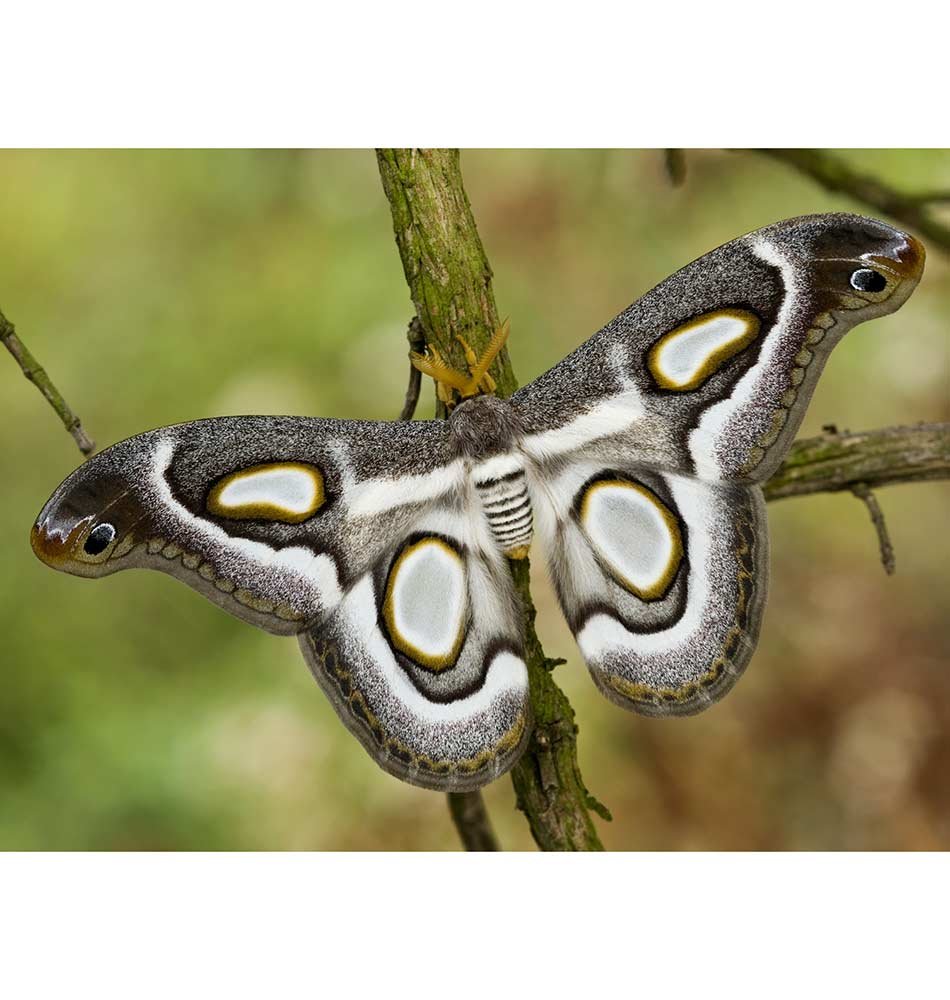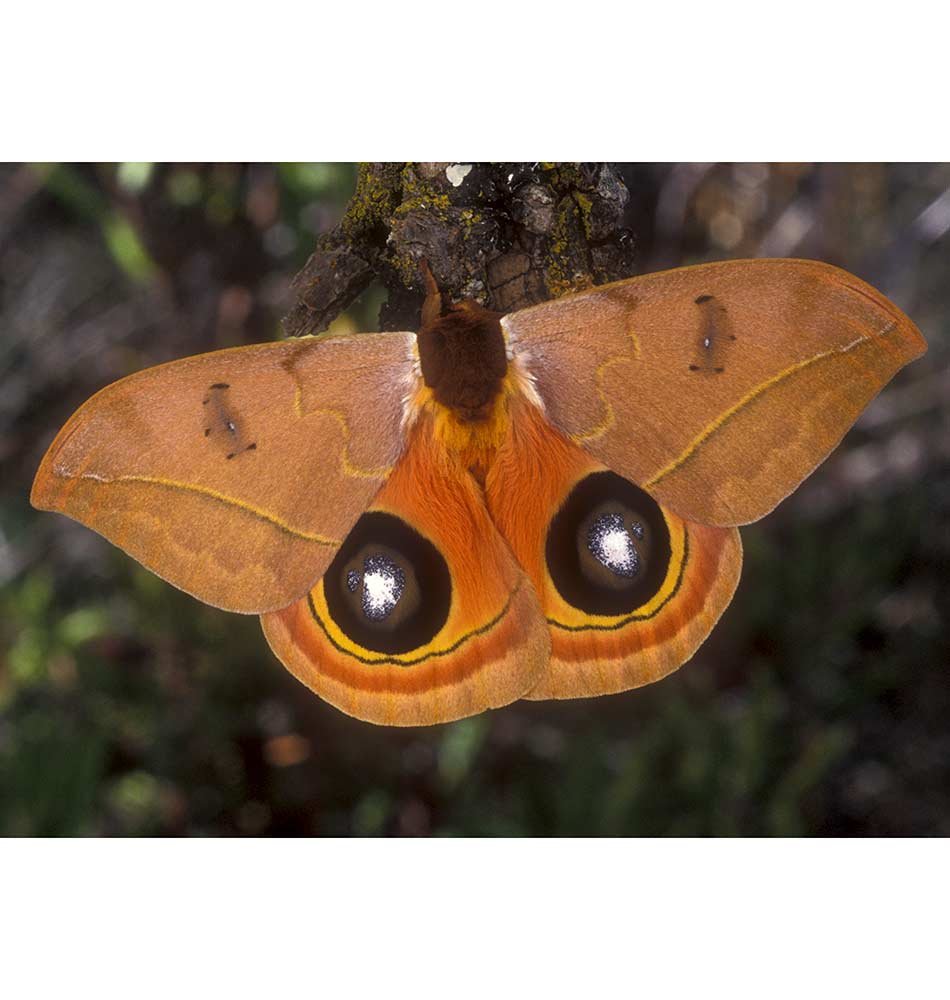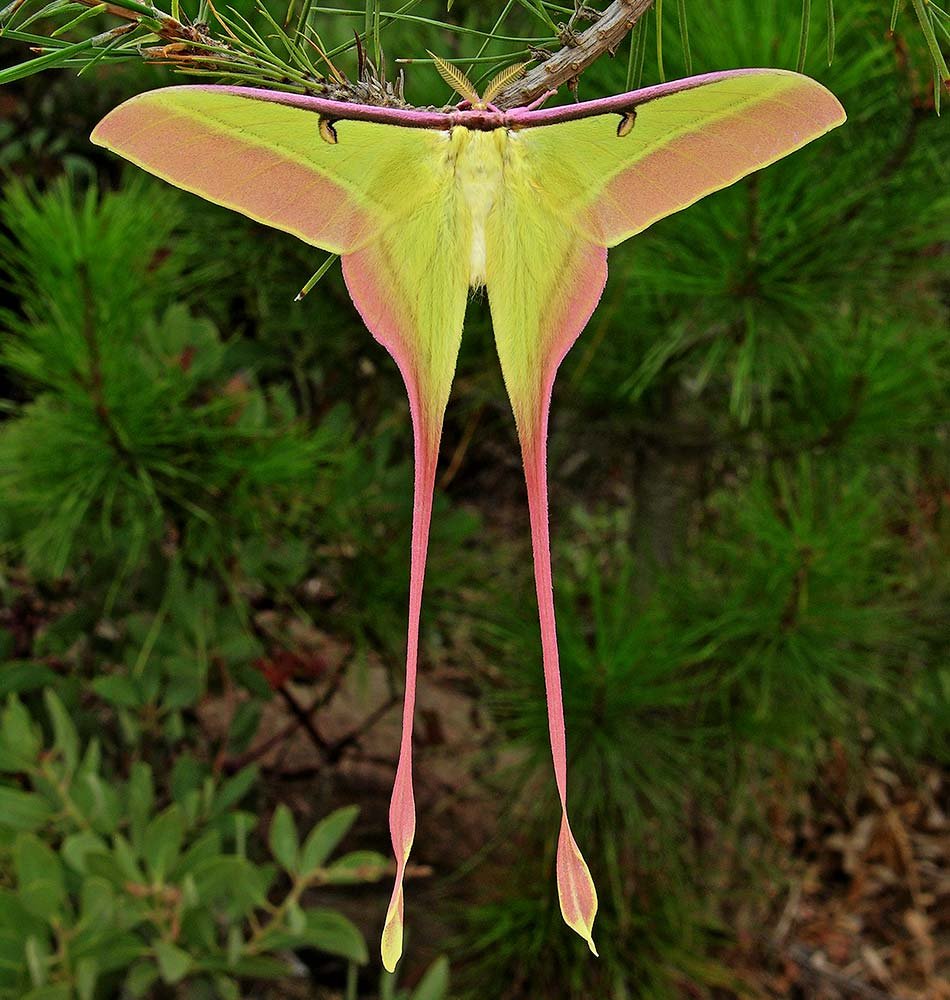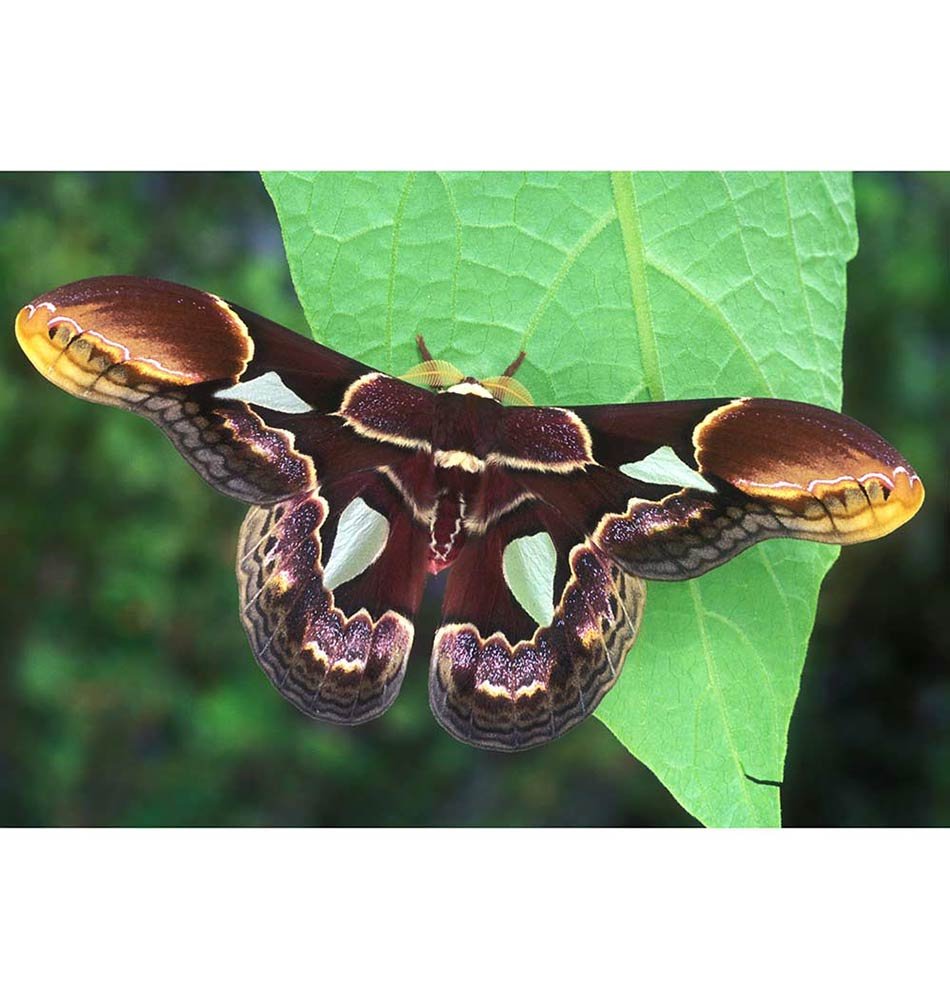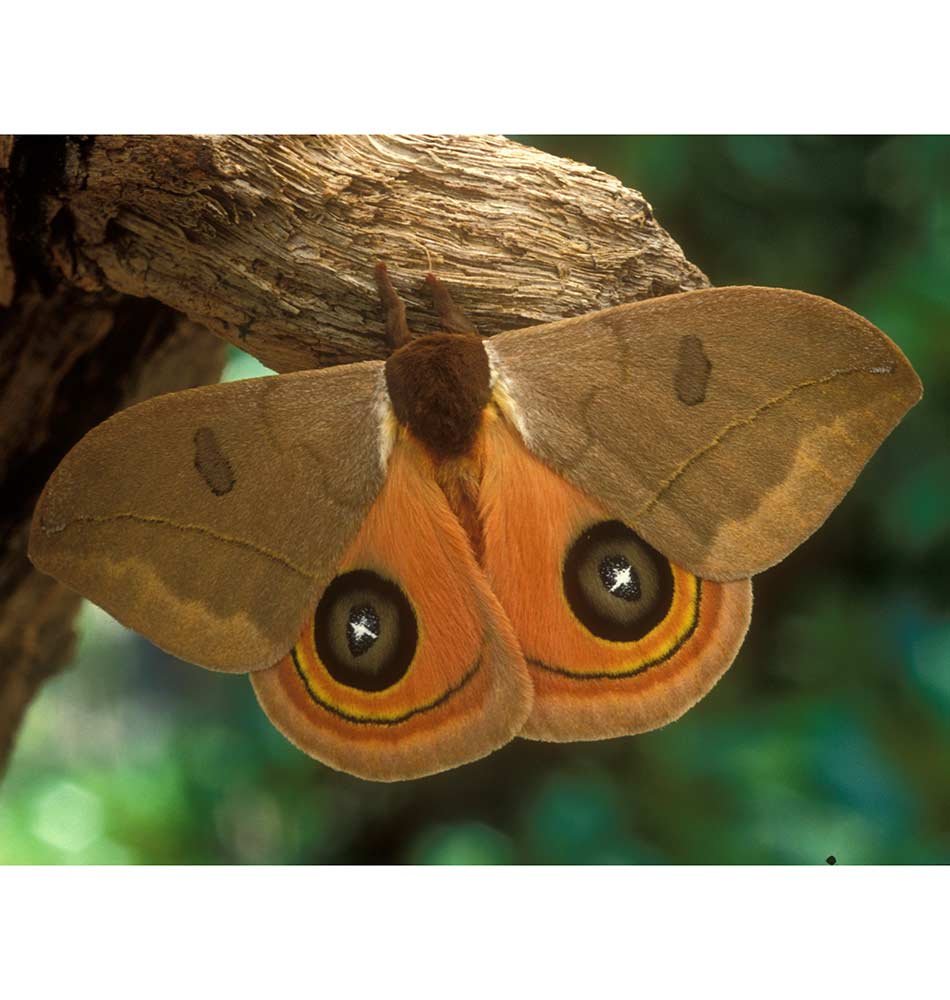
Adres Morya
Giant Silk Moths—Butterflies’ Unsung Rivals
Butterflies get all the attention, flitting from flower to flower in the bright summer sun. At night, another marvel of vibrant color flutters out, unseen and unappreciated.
I’m a butterfly farmer. That statement, by itself, arouses people’s curiosity. They assume I must really love butterflies, and they’re right. I’m often asked which types of butterflies are my personal favorites, but that’s a hard question. People are usually surprised when I answer, “It’s actually not a butterfly, but the giant silk moth.”
I have always had a natural love for all butterflies and moths, but there is something special about this family of gentle and unassuming moths. Most people have never heard of them, let alone seen one up close. Flying mostly at night, they are hard to find, and this may be one reason they are so underappreciated. Yet these moths are some of the most unique and beautiful insects known to man.
The family of giant silk moths, or Saturniidae as they are known in the scientific community, includes the largest—and arguably most beautiful—moths in the world. Like all other moths and butterflies, they share unique designs that enable these delicate insects to fly with amazing ease.
All moths and butterflies belong to the scientific order Lepidoptera, which means “scaly wings” in ancient Greek. It is the perfect name for this order, since their bodies and wings are covered by tiny scales. Giant silk moths are just one family of this larger order that includes more than 125 other family groups, each with its own God-given design and blueprint. They are common worldwide, found on every continent except Antarctica.
Rainbow of Colors and Wing Patterns
There are roughly 1,500 known species of giant silk moths, with more being discovered every year. With so many interesting and colorful varieties, it is hard to pick a favorite. Each one is wonderfully designed with its own unique wing and color pattern. And when I say color, I mean color! Unlike many other drab moths, these guys display the artwork of our Creator in a breathtaking tapestry of color.
The orange-tinted Suraka silk moth (Antherina suraka) of Madagascar, the green and pink–tinted Chinese moon moth (Actias dubernardi), and the yellow-tinted Malaysian moon moth (Actias maenas) are among the most striking species in this family, and are considered by many to be some of the most beautiful Lepidoptera in the world.
Size of a Dinner Plate
But that’s not what makes them stand out the most. These moths are large, really large. There is a reason their name includes the word giant. The largest of all Lepidoptera is thought to be the Attacus atlas moth with a wingspan reported up to 12 inches (30.5 cm), and a wing area of over 60 square inches (387 cm2). To give you an idea, that’s about the size of a dinner plate. It gives a whole new meaning to a bug hitting your windshield!
Ribbon-Like Tails
Now if size alone does not get your attention, there is another Saturniid that makes the record books. The wingspan of the Madagascan moon moth, or Argema mittrei, is not too shabby—about 8 inches. But this beauty is best known for its elegant ribbon-like tails. With a length up to 8 inches (20 cm), it is the longest tail of any known insect.
Unfortunately, few of the most impressive giant silk moths inhabit North America or Europe. However, in my opinion no article about Saturniidae would be complete without mentioning one species native to my country, the United States. The most commonly known and loved American silk moth is Actias luna. With a wingspan of 4 to 5 inches (10–12 cm), it is not very large compared to its tropical cousins, but it is always a special treat to find one on the farm. With its yellowish green color and lacy tails, it has captivated children and adults for generations.
You may never have enjoyed the privilege of seeing a giant silk moth, but there is a possibility you have worn one of its products. Some silk clothing is made from the cocoons of this moth family. Mankind has taken advantage of silken cocoons for thousands of years, and not just from China’s silkworm.
Pointless Beauty?
With their unique design and elusive habits, giant silk moths have fascinated naturalists and scientists for many years. Evolutionists are often a bit puzzled, however, by the exquisite beauty of these moths. There is really no clear naturalistic reason for their colorful and unique design. They fly at night, so they do not use color or wing shape to identify each other. They also find their mates by chemicals, called pheromones, so once again they do not need to identify each other by color or pattern. Camouflage surely isn’t the reason for such vibrant color and design.
Yet these moths are truly masterpieces of our Creator. We may yet discover some unknown ecological reason for these stunning patterns, but one thing is certain: God crafted them to show us His love of beauty.
Sometimes I like to stop and think about why the Creator of the universe gave us giant silk moths as an example of His artistry and creativity. Much like the stars in the night sky, these gentle creatures truly do declare the glory of God. If God took so much effort in designing such abundant natural beauty for our enjoyment, how much more must He care for us? God has provided evidence of His handiwork all around us, and we can see His fingerprints throughout His lavish creation, even flying in the dark of the night.
Beautiful Night Life
Because they come out at night, moths have a reputation of being drab and drear. So take another look! Their astonishing patterns and colors are masterpieces of artistry. Naturalism can’t explain such beauty, which provides no known benefits. But these wonders clearly please the Creator, who loves beauty and wants it displayed every night! (photos by Kirby Wolfe)
Answers Magazine
April – June 2015
The eruption of Mount Saint Helens in the 1980s changed how we view catastrophe; on its thirty-fifth anniversary, we examine what we’ve learned since then.
Browse Issue SubscribeRecommended Resources

Answers in Genesis is an apologetics ministry, dedicated to helping Christians defend their faith and proclaim the good news of Jesus Christ.
- Customer Service 800.778.3390
- © 2024 Answers in Genesis


